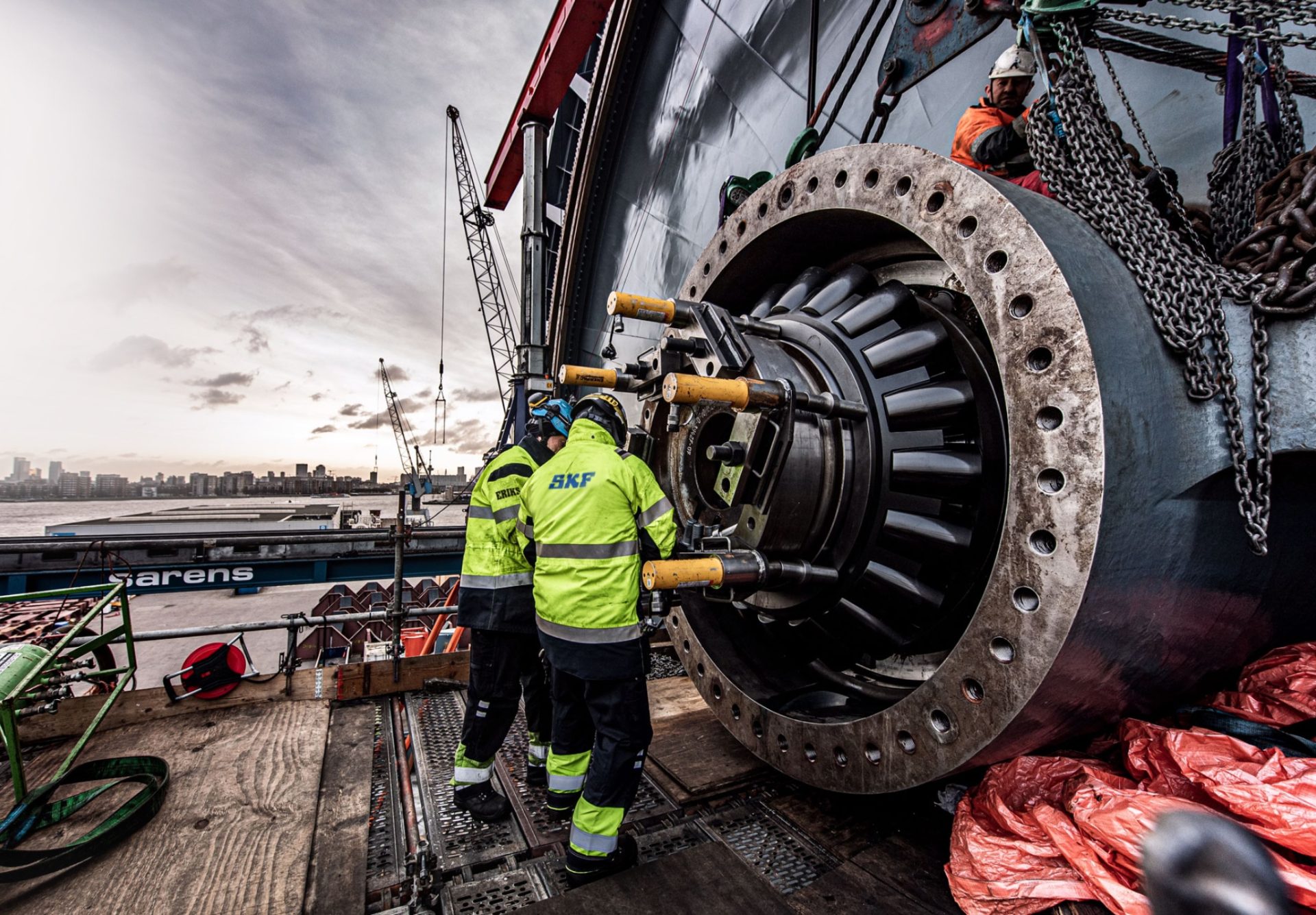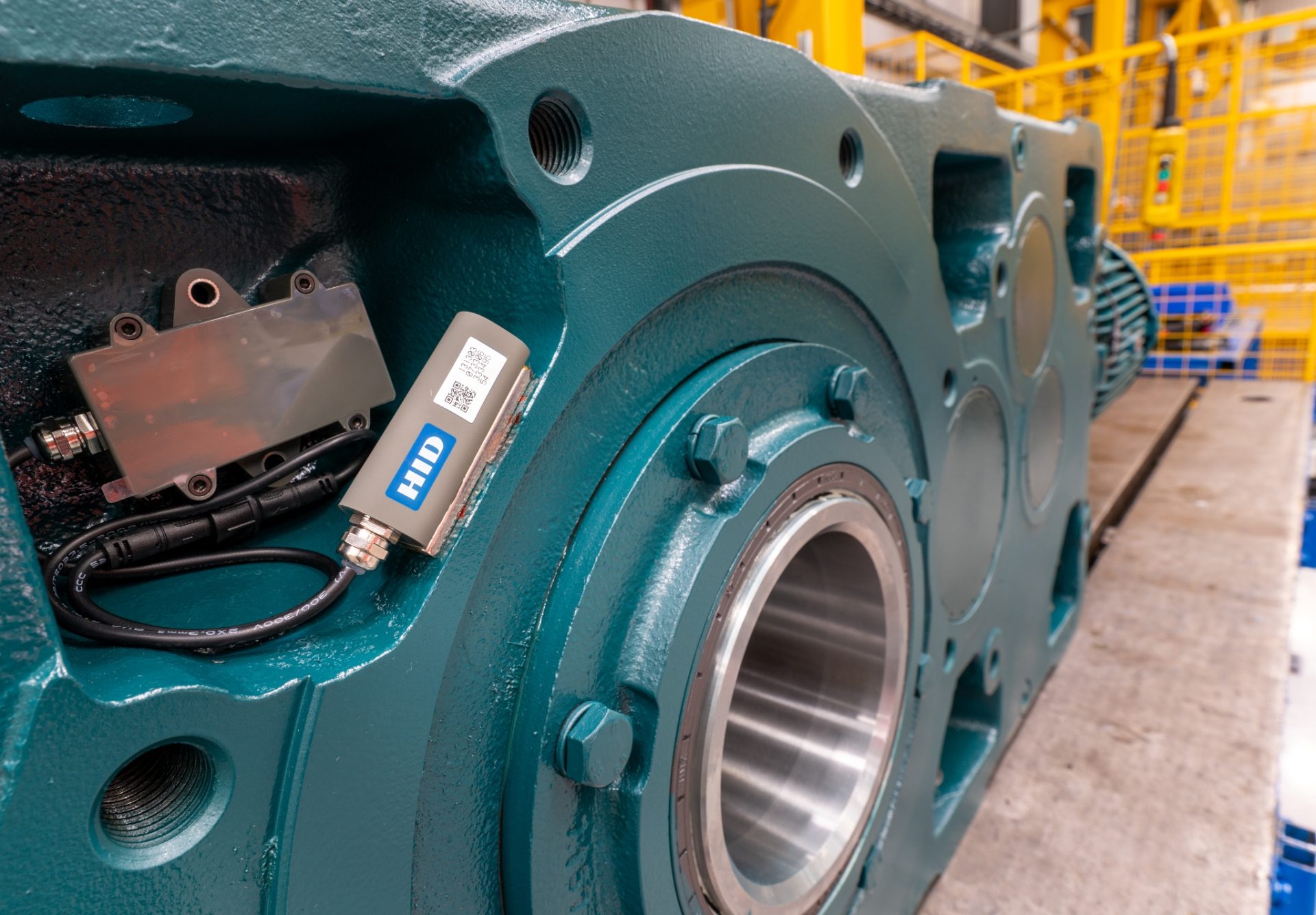
How maintenance partnerships drive digital transformation in UK manufacturing
In a year defined by execution over experimentation, UK manufacturers are re-evaluating how they structure, resource and deliver the maintenance that underpins their operations. The 2025 Manufacturing Momentum Report, produced by The Manufacturer, revealed that the sector is no longer focused on exploring technologies in isolation. Instead, it is looking for joined-up strategies that align maintenance with digital transformation, sustainability goals, supply chain resilience and workforce development.
In this context, maintenance partnerships are emerging as a key enabler. When built around shared standards, consistent training and integrated systems, they offer a way to close capability gaps, scale innovation and ensure maintenance delivers measurable value. This article explores how that shift is taking shape in practice, drawing on real-world examples from the relationship between ERIKS and SKF, the UK’s only official SKF maintenance partner.
Key takeaways
- Maintenance partnerships are becoming essential for UK manufacturers
- Digital transformation is moving from experimentation to execution
- Supply chain transparency and traceability are critical
- Skills development is replacing recruitment as a workforce priority
- Maintenance now plays a central role in sustainability goals
FAQs
- What is a maintenance partnership in manufacturing?
- How does condition monitoring improve manufacturing operations?
- Why is digital transformation important in maintenance?
- How do maintenance partnerships help address the manufacturing skills gap?
- What role does maintenance play in achieving sustainability and net zero goals?
Digital transformation and data in practice
Digital transformation is now the top strategic priority for UK manufacturers, according to the Momentum Report. However, the nature of the challenge has shifted. Manufacturers have already explored pilot schemes and digital trials. The focus in 2025 is on scaling, integrating and optimising those investments. More than 39% of manufacturers surveyed say they still need knowledge and support around digital projects, while 22% cite a desire to move beyond theory and use data for decision-making.
Yet barriers remain. Legacy systems, data quality concerns and cultural resistance continue to slow progress. Manufacturers are increasingly aware that digital transformation is not just about procuring technology but about embedding it within operations and empowering teams to act on insights. In this regard, the combination of condition monitoring platforms and trusted engineering support is especially valuable.
Technologies such as vibration analysis, thermal imaging and acoustic sensors generate a wealth of data. But unless that data is interpreted and acted upon, its value is limited. Maintenance partnerships that combine digital tools with on-theground expertise help bridge that gap.
In the case of ERIKS and SKF, this integration is delivered through connected condition monitoring platforms, including SKF’s IMx, QuickCollect and Microlog systems. These are designed for rotating equipment, capturing real-time data on vibration, temperature and acoustic anomalies. ERIKS adds further insight by combining this with operational signals – such as pressure, flow and valve position – via its Smart Asset Management (SAM) platform. This joined-up approach supports real-time diagnostics, predictive alerts and long-term trend analysis.
Importantly, this capability is scalable. Some manufacturers begin with basic sensor-based notifications. Others adopt a fully managed condition monitoring programme, including on-site support, regular analysis and interpretation by ISO 18436-accredited reliability engineers. The ability to flex and scale this support mirrors the digital transformation journey described in the Momentum Report – one marked not by a single leap, but by continuous, phased implementation.
This approach also helps to overcome resistance to change at the shop floor level. By providing maintenance teams with actionable insights and consistent engineering support, partnerships can reduce anxiety around new technologies and demonstrate value quickly. That, in turn, builds momentum for wider adoption and fosters a more digitally confident culture across operations.
And importantly, digital transformation in maintenance doesn’t stop at condition monitoring. It opens the door to broader asset management strategies, where data from connected equipment can be used to optimise spare parts inventory, reduce unnecessary service interventions and support capital planning. Maintenance partnerships that bring digital capability and asset knowledge together create the conditions for such evolution to occur at pace.
Resilient, transparent supply chains
The Momentum Report identifies supply chain visibility, traceability and Scope 3 emissions tracking as rising priorities for manufacturers in 2025. Added to this, geopolitical volatility, material scarcity and legacy systems are all contributing to a complex procurement landscape. In response, manufacturers are seeking greater confidence in the origin, performance and sustainability of the components they source.
This year’s report also highlights a shift in focus from AI-led supply chain transformation to more practical, resiliencefocused strategies. In this context, maintenance partnerships that provide traceable, certified components and standardised service procedures can make a measurable impact.
Through ERIKS’ role as the UK’s only SKF maintenance partner, customers gain access to genuine SKF components with full traceability. In an environment where counterfeit parts and grey-market substitutes are on the rise, this assurance is increasingly valuable. Every SKF component supplied by ERIKS comes with documented provenance and is supported by audited repair procedures.


Condition monitoring plays a key role in aligning maintenance with sustainability. By identifying faults early, it reduces the likelihood of major equipment failures and the associated waste, energy use and emergency logistics
This consistency extends across ERIKS’ national network of certified repair facilities, all of which are aligned to SKF’s standards. Maintenance events, including inspections, installations and servicing, are logged and trackable via the SAM platform. Customers can access not only a record of what was done, but also the context – including component history, failure modes and remedial action taken.
For manufacturers, this traceability supports compliance with emerging sustainability regulations and strengthens confidence in multi-site operations. It also provides a data foundation for Scope 3 emissions accounting – a growing area of scrutiny highlighted in the Momentum Report.
Furthermore, by consolidating procurement and service delivery through a single maintenance partner, manufacturers can simplify supplier relationships and reduce administrative overheads. This can be especially valuable for companies operating across multiple facilities or managing diverse equipment types.
Additionally, by standardising component usage and specifying approved parts across facilities, manufacturers can reduce variation and complexity in maintenance regimes. This consistency not only supports safety and compliance but enables more reliable forecasting of service needs and lifecycle costs.
Workforce development and closing the skills gap
Manufacturing’s workforce priorities are also changing. The Momentum Report reveals a shift from recruitment to retention and development. Upskilling now outranks hiring as the industry’s primary workforce concern, with cultural transformation and on-the-job learning seen as key enablers of resilience.
Digitalisation and automation have introduced new skill requirements, particularly in maintenance and engineering functions. At the same time, long-standing employees must be supported to develop new competencies without compromising operations.
Maintenance partnerships can contribute directly to this goal. Rather than relying on general contractors or intermittent outsourcing, manufacturers benefit from a consistently trained engineering workforce. In the ERIKS–SKF model, this includes access to the SKF Maintenance Partner Academy – a structured programme covering mechanical services, diagnostics and asset health assessments.
Training is embedded into ERIKS’ internal systems, enabling nationwide consistency. Engineers are trained to recognise failure modes, apply SKF tools and tolerances, and implement corrective measures to an independently audited standard. This reduces site-to-site variation and ensures every service event is executed with the same level of rigour.
In practice, this means manufacturers can call upon engineering teams who are already familiar with SKF procedures, components and diagnostic techniques. This reduces response time, improves first-time fix rates and supports internal teams who may be stretched by resource limitations. At a time when industrial businesses are being asked to do more with less, this level of workforce integration is proving essential.
It also creates a pathway for ongoing professional development. Engineers working within such frameworks receive regular training updates, are exposed to the latest diagnostics and operate in a culture of continuous improvement – all cited in the Momentum Report as critical for long-term skills resilience.
The partnership approach also supports knowledge retention. In contrast to contractor-based models, which can lead to a loss of know-how when individuals move on, structured maintenance partnerships ensure that skills, standards and operational knowledge are institutionalised – reducing dependency on any single individual.
Importantly, this model fosters stronger collaboration between frontline teams and technical experts. Engineers are not just external service providers, but embedded partners who understand the operating environment, constraints and goals of the sites they support. This trust enables faster problem-solving and helps uncover improvement opportunities that might otherwise be missed.
Aligning maintenance with sustainability goals
Sustainability is evolving beyond compliance. The Momentum Report notes a clear shift from high-level ambition to practical implementation. Manufacturers are not just asking how to report on carbon outputs, but how to embed sustainability into day-to-day operations. Maintenance plays a role here, particularly when it comes to energy efficiency, circularity and emissions reduction.
The report shows that while 40% of manufacturers cite net zero as their primary sustainability challenge, only a third feel confident in their ability to implement effective strategies. This suggests a growing need for technical partners who can help embed sustainability at the operational level.
One example is bearing remanufacturing. When large bearings fail, the default response is often replacement. However, if the bearing still has sufficient structural integrity, it can be fully remanufactured to original specifications. Through its SKF relationship, ERIKS supports this process with on-site inspections and logistics, before the component is sent to SKF’s specialist facility for disassembly, regrinding, crack detection and warranty-backed reassembly.
The environmental and cost benefits are significant. Remanufactured bearings typically cost 60–70% of the price of a new one, with reduced material use and carbon footprint. The approach also contributes to supply chain resilience, as lead times are often shorter than for newly manufactured parts. For manufacturers pursuing Scope 3 emissions reduction and circular economy goals, this presents a practical measure to reduce waste, cut emissions and extend the usable life of critical components.
Condition monitoring also plays a role in aligning maintenance with sustainability. By identifying faults early, it reduces the likelihood of major equipment failures and the associated waste, energy use and emergency logistics. Maintenance partnerships that combine digital tools with skilled interpretation help ensure interventions are timely and well-targeted – reducing both environmental impact and operational disruption.
There is also a cultural dimension to sustainability. Partnerships can help embed sustainable practices into daily routines, reinforcing the message that efficiency and responsibility are shared goals. As regulations tighten and customer expectations grow, this operational alignment will be key to maintaining both compliance and competitive advantage.
Manufacturers also benefit from being able to quantify and communicate the impact of their maintenance decisions. Data from systems such as SAM and SKF’s connected platforms can support sustainability reporting, demonstrating reductions in resource use, emissions and energy consumption over time.
Strategic delivery through partnerships
Across each of these areas – digital transformation, supply chain assurance, workforce development and sustainability – the Momentum Report highlights a sector in transition. The barriers to progress are not ambition, but execution. Manufacturers know what needs to be done. The challenge is finding ways to deliver it consistently, credibly and at scale.
Maintenance partnerships, when designed around aligned systems, shared standards and embedded expertise, offer a robust route forward. They provide a framework through which manufacturers can deliver operational improvement while also advancing strategic goals.
The ERIKS–SKF model offers a real-world example of how this can be achieved. But the principle is broader: as the demands on maintenance functions continue to grow, so too must the level of coordination, consistency and collaboration that supports them. For manufacturers navigating the next chapter of industrial transformation, partnerships may prove to be not just an advantage – but a necessity.
For more articles like this, visit our Innovation channel

